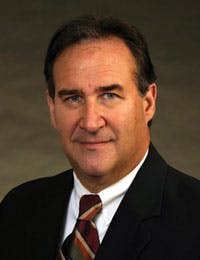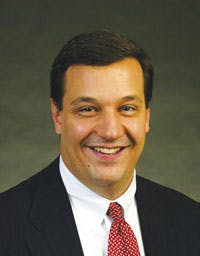Washington oil, gas outlook for 2014 contains certainty, but also questions
Topics Covered in the Webcast:
- Key influences in the global and US oil markets
- How past forecasts compared against actual historical data
- Forces influencing global oil demand, supply, and prices
- Major trends in US oil product markets
- How oil and gas from unconventional resources are reshaping markets in the US and around the world
View Industry Forecast and Review Webcast Now |
US oil and gas leaders began 2014 with a handful of certainty and a bucketful of questions about what might happen in Washington during the coming year. Prospects for legislative reform looked dim amid likely continued congressional gridlock, but the possibility of administrative actions creating new regulations without full consideration of their consequences began to emerge.
US President Barack Obama and other political leaders acknowledged during 2013 that the domestic oil and gas outlook has changed to increased abundance from growing scarcity. "It's positive he recognizes it," Interstate Natural Gas Association of America Pres. Donald F. Santa told OGJ in late December. "Although decisions may be made elsewhere, he can use his position as a bully pulpit to convince decision-makers that something needs to be done."
But campaigns leading up to midterm elections in November are likely to drive legislative policymaking into the background at a time when reforms are badly needed. "Congress is a lagging indicator. It responds to the voters," American Petroleum Institute Pres. Jack N. Gerard said during a press conference at the association's annual State of American Energy (SAE) event on Jan. 7. "That's why we have an extensive network of grass-roots activists."
The industry's domestic performance clearly improved last year. API's yearend statistics on Jan. 23 showed US crude and condensate production averaged 7.5 million b/d, 15.4% more than 2012's 6.6 million b/d. Meanwhile, crude oil imports, excluding purchases for the US Strategic Petroleum Reserve, dropped 9.6% year-to-year to an average 7.7 million b/d in 2013 from 8.5 million b/d in 2012.
Downstream, total US products supplied increased 2.2% year-to-year in 2013 to an average 18.9 million b/d, according to API's statistics. US demand may have fallen, but oil product exports jumped 9.3% from 2012 to an average 3.5 million b/d in 2013, they indicated. That made them the single largest US export component, Gerard noted on Jan. 7.
'A new day'
"Some prohibitions and policies are vestiges of the past," Gerard said. "The president talks about doubling exports. Energy can contribute, particularly oil and gas. API reaffirms its support for free trade. It's a new day, a new time for us to change policies from the 1970s when supplies were scarce."
The US has the most efficient refineries to process crude from new domestic sources, American Fuel & Petrochemicals Manufacturers Pres. Charles T. Drevna observed. "We could do a lot for energy and national security," he told OGJ on Jan. 7. "But we shouldn't squander this incredible opportunity."
Drevna said, "Let's get out of living in the past with antiquated policies that keep markets from operating properly. Let's not live in the shadows of the past that have absolutely no bearing on what's happening today. It's going to require some changes in the way some of our elected officials think."
The indisputable US oil and gas production renaissance that has occurred from tight shale formations raises the question of whether the federal government will encourage or inhibit it, Independent Petroleum Association of America Pres. Barry Russell said. "It particularly involves possibly federalizing what states have been doing effectively," he said on Jan. 22. "It's important to make sure state programs are up to the challenge. There also are some orchestrated acts by some environmental groups to deal with."
API Upstream Director Erik Milito said, "It has become clear that unconventional oil and gas production is for real. The technologies are successful. But there will continue to be issues for the industry to make sure roadblocks don't get in the way of our progress while we address concerns of those who are worried it might harm the environment."
IPAA's priorities
Safeguarding federal tax provisions its members consider essential, combating aggressive campaigns against hydraulic fracturing, and reducing opponents' abuses of the federal Endangered Species Act are IPAA's three main priorities for 2014, Russell told OGJ. "If Congress is deadlocked on certain issues, our focus has to shift to the agencies where we make comments and hold informal meetings to explain our position, particularly if executive orders are increasingly used," he said.
"We don't expect Congress to make major reforms, so we've had to shift our focus to agencies which are trying to federalize regulations," said Lee O. Fuller, IPAA's vice-president of government relations. "You have to be much more specific because nearly everything establishes a record." IPAA has brought more of its technical people in to discuss proposed drilling regulations at the US Bureau of Land Management and the US Environmental Protection Agency's new source performance standard proposal for producers, he told OGJ.
"Some regulatory proposals appear innocuous individually," added Susan W. Ginsberg, IPAA's vice-president of regulatory affairs. "But they can turn into Death by a Thousand Cuts for a small producer. An independent producer can look large from a production standpoint, but not have many employees." Cooperating associations have been valuable in bringing such matters up on the state and local levels, she added.
IPAA officials have been impressed by their meetings with Sally Jewell, who succeeded Ken Salazar as US Interior Secretary in 2013. "She knows the industry from having worked in it," said Daniel T. Naatz, IPAA's vice-president of federal resources and political affairs. "She recognizes there are challenges. There are questions about federal land access she's ready to discuss. She and the White House need to address revenue and resources."
Helping shape the next 5-year US Outer Continental Shelf program is among API's top priorities, Gerard said. "We're working with [Interior] to do seismic in the Atlantic," he said. "Governors of coastal states from Virginia south support this."
Long-term thinking
"We're trying to think long term by looking at the Atlantic, the Arctic, and the eastern Gulf of Mexico because it takes 15 years to get development going," API's Milito explained. "We need to make sure we're not making decisions in 2017 that make it impossible to have a lease sale before 2023 and for production to begin 10 years." He said one powerful argument is that from 2007 to 2012, the number of US oil and gas extraction jobs rose by 40%, compared with 1% for the US economy in general.
Another is the significant reduction in US carbon dioxide emissions, which are at their lowest levels in nearly 20 years, largely thanks to the abundant gas supply that came from horizontal drilling and hydraulic fracturing, Gerard said in his SAE address. "Further, since 2000, the oil and gas sector has spent more on low and zero-carbon technologies than the federal government and nearly as much as all other industries combined," he said.
INGAA's Santa said, "Gas has become so successful so quickly that it has made proponents of a low-carbon economy feel the transition they want is beginning to look less likely. The abundance has become the conventional wisdom, along with the consequences. Gas can't fly under the radar screen anymore. At the same time, it has a great story."
Martin E. Edwards, INGAA's vice-president for legislative affairs, added, "It's part of so many debates now. Given the supply situation and its impact on prices, it's in the center of discussions about energy security, manufacturing, or controlling greenhouse gas emissions whether people like it or not."
Natural Gas Supply Association Pres. Skip Horvath, on Jan. 6, said, "Gas has brought an extraordinary manufacturing renaissance to this country, which will help correct our huge foreign trade deficit." NGSA's latest forecast calls for US gas consumption to rise three times as quickly from 2012 to 2020 as it did from 1987 to 2012, he told OGJ. "That's unprecedented," Horvath said, adding that much more infrastructure will be needed but that the US Federal Energy Regulatory Commission should be able to respond.
More rail transport
AFPM's Drevna said development of technologies to produce tight oil came more quickly than pipelines to transport it, putting a greater burden on rail. "At the Philadelphia Energy refinery, they have the daily capacity to offload three unit trains with 120 cars each," he said. "It's quite a spectacle."
Gerard said the industry is expected to spend more than $80 billion on infrastructure during 2014. "When I talk to local heavy equipment dealers, they say the biggest demand is coming from energy," he said. Rail's growing crude transportation role demonstrates the market will adjust if administrative inaction, such as continuing to delay a decision on the proposed Keystone XL crude oil pipeline's cross-border permit, distorts the market, API's president said.
"Our focus is on safety," he said. "We need to get to the root causes of rail accidents, such as another train's being derailed. Three years ago, government began to call for better tank car design, and the industry immediately adopted it. But root causes such as derailed cars shouldn't be ignored."
Several association officials who spoke to OGJ said they have seen the Obama administration's outlook toward the oil and gas industry improve since the beginning of the first term, when the emphasis seemed to be on developing alternatives. "It's an ever-growing, ever-evolving education effort," said IPAA's Naatz. "We just try to lay out the facts, build relationships, and be fully transparent because they're getting pressure from the other side."
IPAA's Fuller said, "There's no regulatory issue the opposition won't try to elevate into a fight." The "sue-and-settle" technique—which involves suing a federal agency, then encouraging it to quickly reach a court-approved settlement so it won't have to pay legal fees—has been around for years, but occurs more frequently now, he told OGJ.
"Frankly, we're very concerned," said Fuller. "We don't want sue-and-settle to become the norm."
'Tough battles ahead'
Naatz said he hopes Congress will exercise its oversight responsibilities and try to get agencies to explain why they're doing something, and what they hope to accomplish. "Now that we have some regular order in the budget for a while, we'll be able to look more closely at these issues," he said. "There could be a lot of tough battles ahead. History shows that as an administration approaches its final days, it can start to issue regulatory orders that aren't always fully thought out."
When it comes to reforming the Renewable Fuels Standard, AFPM's Drevna said he thought there is less than a 50% chance of Congress passing a bill this year. "But I expect the discussion to continue," he told OGJ. "We knew we'd be in this for the long haul, and we're prepared to continue." He said he was encouraged by EPA's finally acknowledging a blend wall exists in the RFS's ethanol blend quotas, which sent a signal to Congress. "We're no longer a voice in the wilderness," AFPM's president said. "A lot of other people realize there are problems with the RFS."
Rising product exports have shown that reports of the US refining industry's demise were premature, Drevna maintained. "Everyone knows that's what has kept us alive as domestic demand has flattened," he said, adding, "But we can't keep going indefinitely without a free market in our own country."
API's Milito said operators should come together and develop best practices for working in communities where there hasn't been much oil and gas activity. "It has to be collaborative and cooperative with local officials. It involves learning from each other," he said. "From a boom-and-bust perspective, you need to consider how other industries will thrive. Processing plants will be needed. So will steel, chemical, and other manufacturing facilities in proximity to production. Texas and Oklahoma have shown it can continue for years."
In his address, Gerard said API's "America's Energy, America's Choice" campaign will send a message to lawmakers at all levels of government that it's time to end the intrusion of extreme political ideology or personal agendas, and that the only limits on US energy potential will be those that are self-imposed by short-sighted politicians.
"In my view, it would be unforgivable if this country were to abandon or ignore its responsibility to future generations by missing this opportunity based on flawed science, outdated assumptions, and political orthodoxy," Gerard said.
About the Author

Nick Snow
NICK SNOW covered oil and gas in Washington for more than 30 years. He worked in several capacities for The Oil Daily and was founding editor of Petroleum Finance Week before joining OGJ as its Washington correspondent in September 2005 and becoming its full-time Washington editor in October 2007. He retired from OGJ in January 2020.








